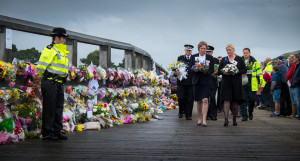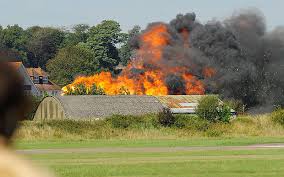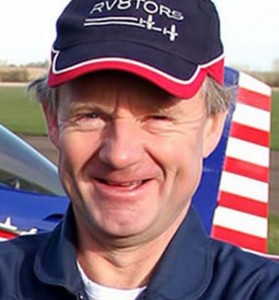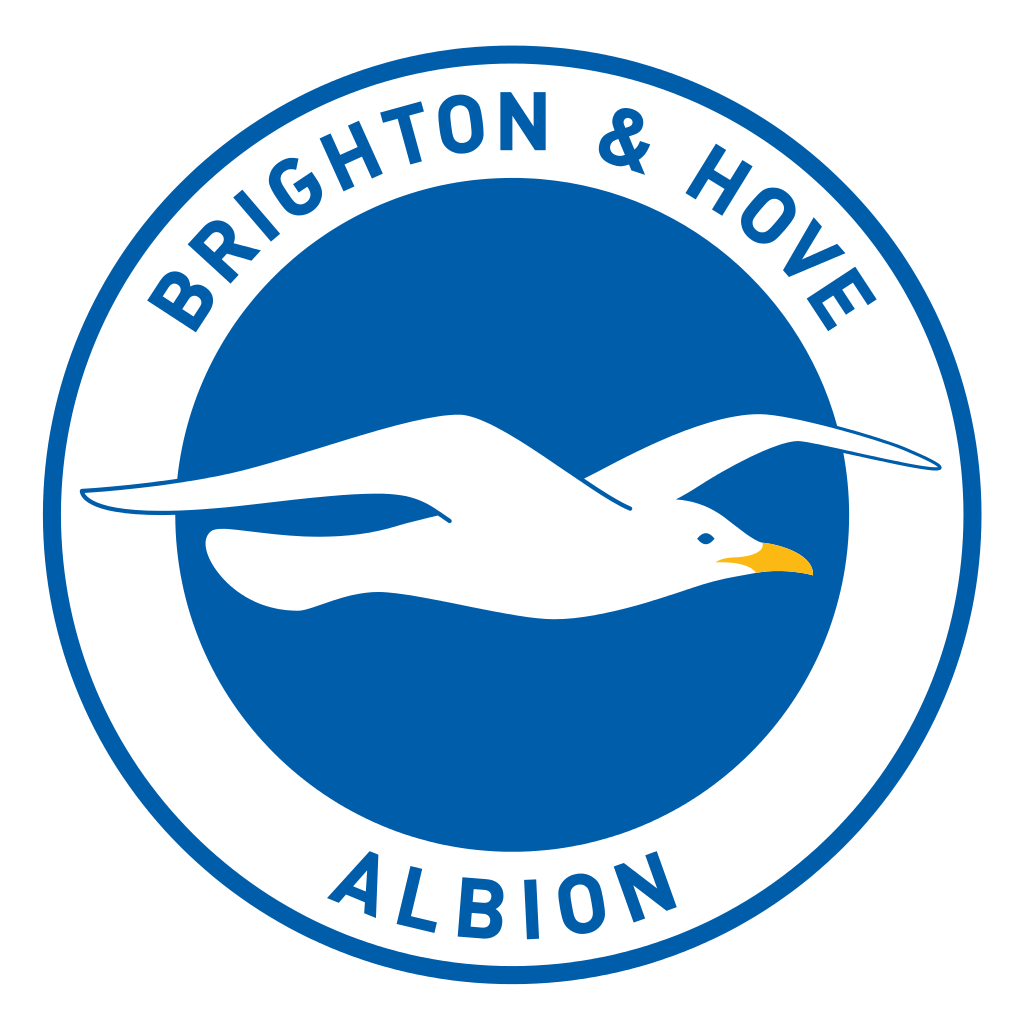The Shoreham air show disaster pilot Andy Hill flew too slow and too low, according to the final report into the crash which left 11 men dead and 13 people injured.
The Air Accidents Investigation Branch (AAIB) set out reasons, including pilot error, why the vintage Hawker Hunter may have been flying too slowly during a loop the loop.
But it remains unclear whether Mr Hill was at fault or whether the engine failed to respond as he tried to accelerate out of the manoeuvre. And questions were raised about the altimeter, which records the aircraft’s height.
Mr Hill was ejected clear from the jet aircraft although the AAIB said that he did not appear to have activated the ejector seat. Incredibly he survived the crash on Saturday 22 August 2015.
The AAIB said today (Friday 3 March): “The aircraft was carrying out a manoeuvre involving both a pitching and rolling component, which commenced from a height lower than the pilot’s authorised minimum for aerobatics, at an air speed below his stated minimum, and proceeded with less than maximum thrust.
“This resulted in the aircraft achieving a height at the top of the manoeuvre less than the minimum required to complete it safely, at a speed that was slower than normal.
“Although it was possible to abort the manoeuvre safely at this point, it appeared the pilot did not recognise that the aircraft was too low to complete the downward half of the manoeuvre.
“An analysis of human performance identified several credible explanations for this, including not reading the altimeter due to workload, distraction or visual limitations such as contrast or glare, misreading the altimeter due to its presentation of height information or incorrectly recalling the minimum height required at the apex.
“The investigation found that the guidance concerning the minimum height at which aerobatic manoeuvres may be commenced is not applied consistently and may be unclear.
“There was evidence that other pilots do not always check or perceive correctly that the required height has been achieved at the apex of manoeuvres.
“Training and assessment procedures in place at the time of the accident did not prepare the pilot fully for the conduct of relevant escape manoeuvres in the Hunter.
“The manoeuvre was continued and the aircraft struck the ground on the northern side of the westbound carriageway of the A27 close to the central reservation with a ground track at a slight angle to the direction of the road.
“When it struck the ground it broke into four main sections. Fuel and fuel vapour released from the fuel tanks ignited.
“In its path were vehicles that were stationary at, or in the vicinity of, the traffic lights at the junction with the Old Shoreham Road, and pedestrians standing by the junction.
“The pilot did not attempt to jettison the aircraft’s canopy or activate his ejection seat. However, disruption of the aircraft due to the impact activated the canopy jettison process and caused the ejection seat firing mechanism to initiate.

“The seat firing sequence was not completed due to damage sustained by its firing mechanism during the impact.
“The seat was released from the aircraft and the pilot was released from the seat as a result of partial operation of the sequencing mechanism.
“Some of the pyrotechnic cartridges remained live and were a hazard to first responders until they were made safe.
“The investigation found that the aircraft appeared to be operating normally and responding to pilot control inputs until it impacted the ground.
“Defects in the altimeter system would have resulted in the height indicated to the pilot being lower than the actual aircraft height at the apex of the manoeuvre.
“Information included in a previous AAIB report indicated that there had been several cases involving the type of engine fitted to this aircraft where an uncommanded reduction in engine speed had occurred and subsequent engineering investigation did not establish a clear cause.
“This investigation was unable to determine whether a reduction in engine speed recorded during the accident manoeuvre was commanded by the pilot.”

The AAIB also said: “The investigation found that defects and exceedences of the aircraft’s operational limits had not been reported to the maintenance organisation and mandatory requirements of its Airworthiness Approval Note had not been met.
“During prolonged periods of inactivity the aircraft’s engine had not been preserved in accordance with the approved maintenance schedule.
“The investigation identified a degraded diaphragm in the engine fuel control system, which could no longer be considered airworthy. However, the engine manufacturer concluded it would not have affected the normal operation of the engine.
“The aircraft had been issued with a Permit to Fly and its Certificate of Validity was in date but the issues identified in this investigation indicated that the aircraft was no longer in compliance with the requirements of its Permit to Fly.
“The investigation found that the parties involved in the planning, conduct and regulatory oversight of the flying display did not have formal safety management systems in place to identify and manage the hazards and risks.

“There was a lack of clarity about who owned which risk and who was responsible for the safety of the flying display, the aircraft and the public outside the display site who were not under the control of the show organisers.
“The regulator believed the organisers of flying displays owned the risk. Conversely, the organiser believed that the regulator would not have issued a permission for the display if it had not been satisfied with the safety of the event.
“The aircraft operator’s pilots believed the organiser had gained approval for overflight of congested areas, which was otherwise prohibited for that aircraft, and the display organiser believed that it was the responsibility of the operator or the pilot to fly the aircraft’s display in a manner appropriate to the constraints of the display site.
“No organisation or individual considered all the hazards associated with the aircraft’s display, what could go wrong, who might be affected and what could be done to mitigate the risks to a level that was both tolerable and as low as reasonably practicable.
“Controls intended to protect the public from the hazards of displaying aircraft were ineffective.”
The investigation identified the following causal factors in the accident
• The aircraft did not achieve sufficient height at the apex of the accident manoeuvre to complete it before impacting the ground because the combination of low entry speed and low engine thrust in the upward half of the manoeuvre was insufficient.
• An escape manoeuvre was not carried out despite the aircraft not achieving the required minimum apex height.
The following contributory factors were identified
• The pilot either did not perceive that an escape manoeuvre was necessary or did not realise that one was possible at the speed achieved at the apex of the manoeuvre.
• The pilot had not received formal training to escape from the accident manoeuvre in a Hunter and had not had his competence to do so assessed.
• The pilot had not practised the technique for escaping from the accident manoeuvre in a Hunter and did not know the minimum speed from which an escape manoeuvre could be carried out successfully.
• A change of ground track during the manoeuvre positioned the aircraft further east than planned producing an exit track along the A27 dual carriageway.
• The manoeuvre took place above an area occupied by the public over which the organisers of the flying display had no control.
• The severity of the outcome was due to the absence of provisions to mitigate the effects of an aircraft crashing in an area outside the control of the organisers of the flying display.
The AAIB has published three interim reports into the crash with 21 safety recommendations. Eleven more safety recommendations are included in the final report.
The eleven men who died were
• Maurice Abrahams, 76, a wedding chauffeur, of The Brow, Woodingdean
• Dylan Archer, 42, an IT consultant, of Frederick Street, Brighton
• Richard Smith, 26, a marketing and web development specialist, of Lansdowne Square, Hove
• Tony Brightwell, 53, an NHS care manager, of Marmion Road, Hove
• Matt Grimstone, 23, a groundsman for Brighton and Hove Albion and Worthing United footballer, of Osborne Road, Brighton
• Jacob Schilt, 23, a delivery driver and fellow Worthing United footballer, of The Close, Brighton
• Graham Mallinson, 72, a retired engineer, from Newick, near Lewes
• Daniele Polito, 23, a builder, from Goring
• Matt Jones, 24, a labourer and personal trainer, from Littlehampton
• Mark Reeves, 53, a computer-aided design technician, from Seaford
• Mark Trussler, 54, a window cleaner and general builder, from Worthing







